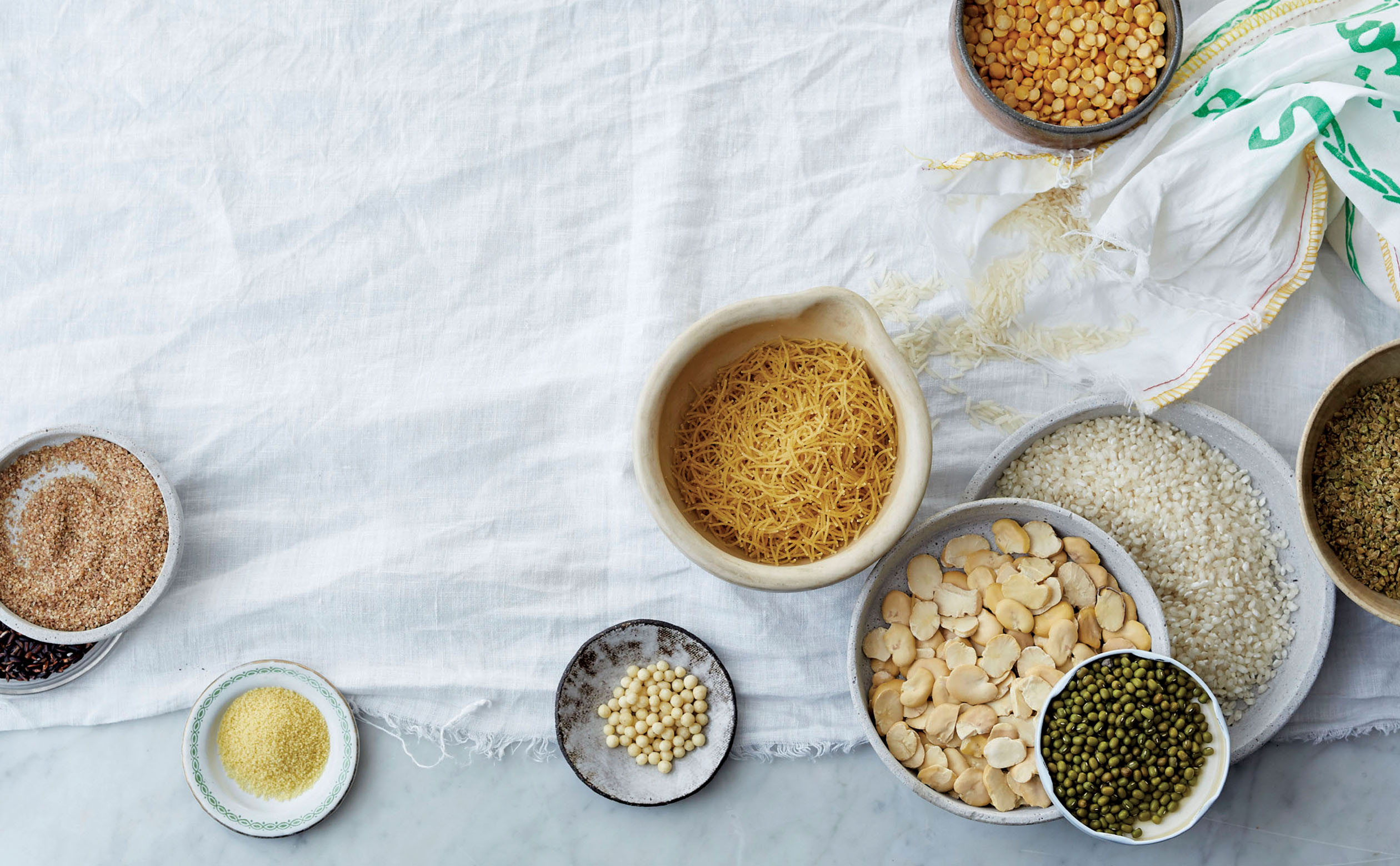
EATING RICE
MAACHEY BHAATEY BANGAALE
—AN OLD BENGALI SAYING
DELICATELY SHEATHED,
WRAPPED
IN PAPERY HUSK—
I LOVE THE FEEL AND
ELEGANCE OF LONG SLENDER
RICE GRAINS—
THEIR SEDUCTION
AND CHARM,
THEIR AROMA AND SHAPE—
THEIR FINE FLAVOR
AND
THE DEEP VIRGIN TASTE.
—SUDEEP SEN
Rice is the most important crop in the world, with more than three billion people relying on it as a staple. Muslims may have first learned about rice from the Persians of the Sassanid empire when they defeated them in 635. Or they could have learned about rice in the Indian Sind province, which they conquered in 711. In either case, Muslims were growing rice more or less throughout the territories they had conquered and ruled over by the year 1000. Until then, wheat had been their staple, and you still find a noticeable division among Muslim countries between those relying on grain—such as Turkey, Lebanon, Syria, Jordan, and Egypt—and those that rely mostly on rice and/or noodles—such as the Arabian Gulf, Iran, India, Pakistan, and Northern China.
Long-grain rice is the preferred type in Iran, Afghanistan, the Arabian Gulf, India, and Pakistan, while short-grain is favored by Malaysians, Indonesians, and Levantines. Rice was first grown in China and from there it was taken to countries like India and Sri Lanka. It is reputed to have been brought to West Asia and Greece in 300 BC by the army of Alexander the Great.
Wheat, on the other hand, was the first crop to be domesticated in the Fertile Crescent, a region that encompasses Turkey, Lebanon, Syria, and Jordan. It is of course milled to produce flour for bread, but it is also used whole in both sweet and savory dishes, and it is parboiled and cracked to produce bulgur, which for a long time was the “rice” of that region. And in the spring, some of it is harvested green and burned in the fields to produce frikeh. Most of North Africa has couscous as a main staple after bread. Legumes are one of the most ancient foods. They’re eaten throughout the Muslim world, and chickpeas and lentils are essential ingredients in most Muslim countries. As for pasta, it is mostly in the form of dumplings, dough cooked in a meat and vegetable sauce like in marguga, or vermicelli cooked with rice.
The recipes I have included in this chapter are mostly for main courses, although there are a few for side dishes.
